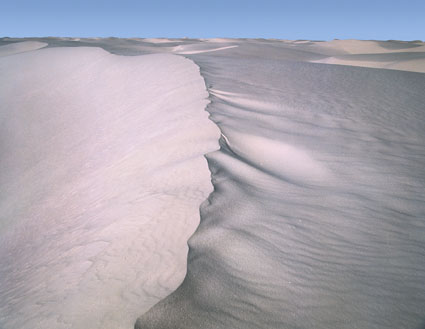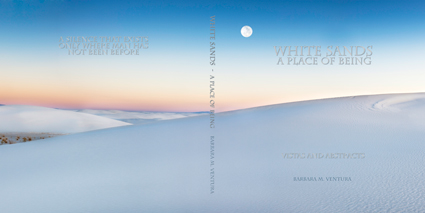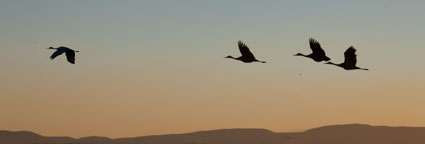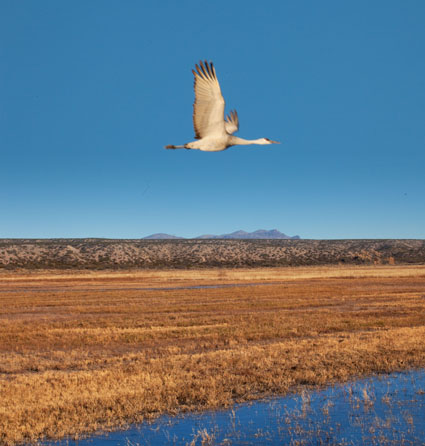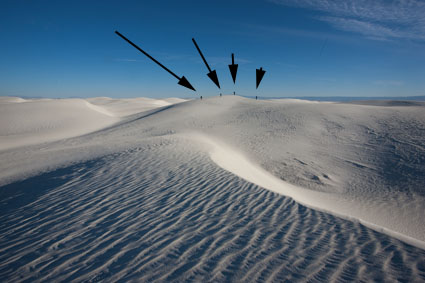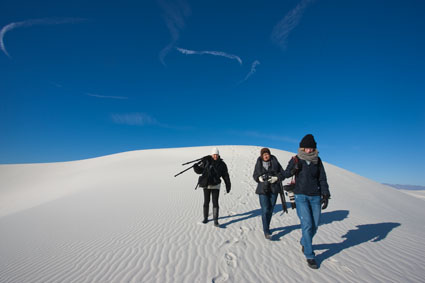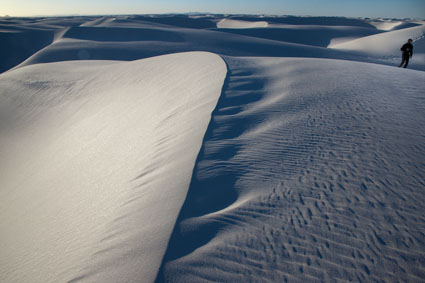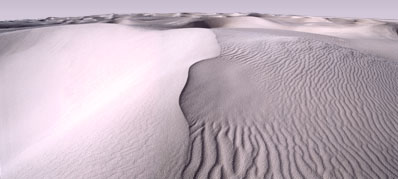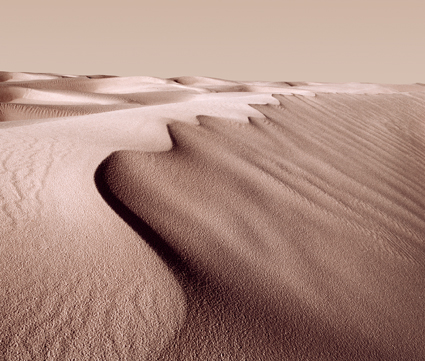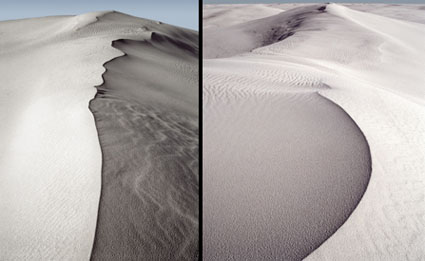Finding The Right Words Can Help You Find Your Way
Arabesque I, White Sands, New Mexico, 2003
In 2002 I went to White Sands National Monument, New Mexico. I photographed for an evening and a morning, exposing twelve rolls of film. When I returned I found two ‘keepers’ and counted myself lucky. It’s my feeling we’re lucky if one percent of the exposures we make are worth presenting.
This image was much more subtly surreal than many of my other images and didn’t fit neatly into the work I was currently developing. I found it presented a very useful creative challenge to me. Yet I was uncertain how to begin and take steps to resolve it.
I lived with the image in my dining room, looking at it both casually and seriously, several times a day for an extended time. I not only collected my own impressions but also the impressions other people share with me. It felt good when my father commented one day, “That’s a good one. You’ve managed to avoid all the west coast clichés.” But I still hadn’t found what I was looking for. Much later, my father-in-law squinted and asked, “Is that water?” Instantly I knew I had found what I was looking for. I wasn’t photographing grains of sand, I was photographing the waves that moved them.
I returned to White Sands to develop a body of work around this theme. As I moved through the dunes, I constantly returned to the word wave, asking, “How many ways can I make photographs of waves in this environment.” Photographing for the same amount of time and making the same number of exposures I found ten ‘keepers’; the clarity I had found in one word dramatically increased my productivity.
Walking out of the dunes I took shelter in the shade of a park sign that explained how “these dunes move three feet a month”. I had intuitively sensed this and it got into my work. Now my conscious mind had more information to work with and a direction to give it.
While looking at the new set of related images I quickly realized that they related both thematically and formally to another series of images – seascapes in fog, Condensation. This new body of work bridged my desert and seas work. One realization cascaded into another. Waves are a common theme that runs through a majority of my work.
This image reminds me of the power of words. When I first made it, I couldn’t put it into words. Words help me find out more about where I’ve been, where I’m going, and where I want to go. Words helped me understand what I had done and what I wanted to do next. Words helped me understand my life, my work, and myself. Time and time again, I’ve found the power of words to be extremely helpful.
How many ways can putting your experiences into words help you make stronger images?
Find more related images here.
Read more The Stories Behind The Images here.


